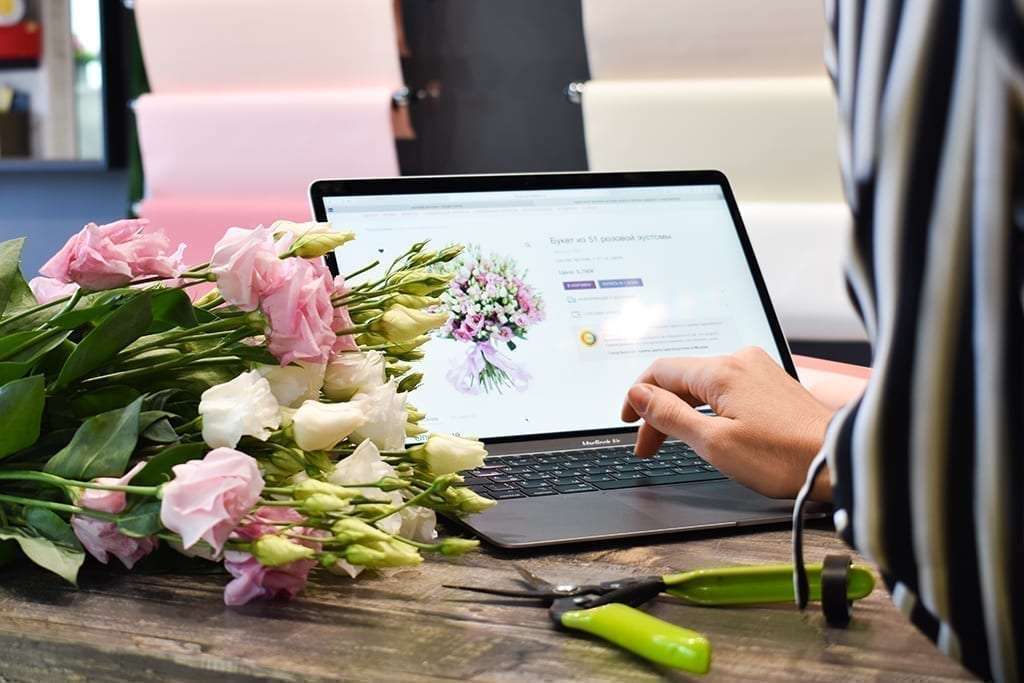
One year into the pandemic, floral marketers are well positioned to offer online-ordering and in-store pickup are on their way to having a successful Mother’s Day. SAF Now editors reached out to national marketers to find out what other factors may give retailers an edge.
Website IS the Storefront
“We encourage florists to be thinking about the website as the first and primary way they engage customers, while touting how they’ll be delivering gifts using COVID-safe protocols,” says Renato Sogueco, VP, Digital Strategy and Education, BloomNet. Proactively posting new arrangements or offerings will help with sales. Sogueco recommends florists actively merchandise their product pages based on analytics at least biweekly, if not weekly. In a recent Mother’s Day forecast survey conducted by the Society of American Florists, respondents concurred, saying they are working on increased internet exposure and differentiated offerings on their websites to remain competitive.
In addition to the online orders, Katherine Kerr, Chief Financial Officer for Teleflora, says they have seen more flexible delivery. “Florists can offer customers a pre-determined choice of delivery dates to help them manage their deliveries during the busiest days of the holiday.”
Social Media More Important Than Ever
Marketers agree that social media has shown to be a great way to stay top-of-mind with your customer base and is now a key part of the overall online strategy.
Sogueco says both web and social media marketing strategies are equally important but represent different opportunities for the retail florist. “Social media is about building brand and engaging customers. It’s important to maintain both as customers will search for a product, and then check out social in making decisions on where to place an order,” Sogueco said.
Farbod Shoraka, BloomNation’s co-founder and CEO, agrees, saying the information stream should start at the website, then “spill into social channels, where updates can be provided, and questions can be answered in the comments.” Being social on social media is key and you can interact with current and potential customers alike.
Social media trends such as hashtag and meme culture have become successful promotional methods for florists, especially in reaching younger customers. “Putting increased resources into their Instagram, YouTube and TikTok feeds can help build their brand with new customers. Mobile remains the fastest growing trend related to these social platforms,” says Sogueco.
Dig Deep to Understand Supply Issues
Much has been discussed about supply chain issues for the industry this spring.
“We’re seeing record-breaking demand for all flowers in the market this year, but there are simply not enough flowers to go around due to the ripple effects of the pandemic and weather conditions in South America,” says FTD’s CEO Charlie Cole, adding that FTD has reduced its assortment, “focusing on timeless and loved arrangements – and increased retail pricing in response to higher flower costs.”
Sogueco encourages florists to visit supplier websites – wholesale and grower – and sign up for their eNewsletters, “Like/Follow” their social media accounts. While this will not necessarily offset the delays in supply, supplier social media posts might give florists more of an insight into the chain and what to proactively plan for.
Kerr notes that floral availability is going to be an ongoing challenge, but a florist’s website can significantly help — especially when retailers use it to manage product availability in real time. “Florists should be able to promote and adjust products both heading into the holiday but also as floral supply changes throughout the holiday,” Kerr says. “For example, our eFlorist websites allow florists to quickly limit which products are displayed on site, show products as ‘temporarily unavailable,’ and feature designer choice arrangements as prominently as they choose.”
Technology Here to Stay
2020 was a shock to the floral industry in a good way, notes Shoraka. “The pandemic has thrown consumer about 10 years ahead of adoption of online commerce in the floral industry,” he says. “While we do expect that surge to taper off as the U.S. opens back up, many consumers who had a great experience ordering online will continue to do so,” predicting 2021 will be stronger than 2019, but might not surpass 2020’s demand.
After a year of adjusting to this new environment, florists have required more tools to manage their online business. Their websites need to provide a flexible experience, to help them manage their business while also providing an excellent customer experience, Kerr says.
COVID-19 awakened the public to the power of flowers last year and this year, the trend definitely seems to be continuing, says Dan McManus, president of TeamFloral, a company that works with florists nationally on e-commerce strategy. “The shops doing online marketing are getting an even bigger increase. It is a wonderful time to be a florist.”
Jennifer McNally is the interim editor of SAF NOW.

